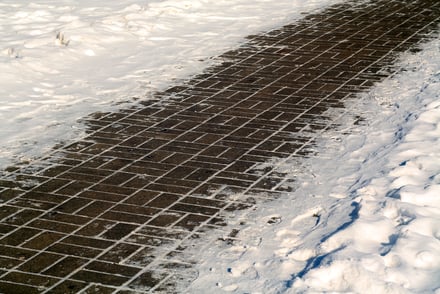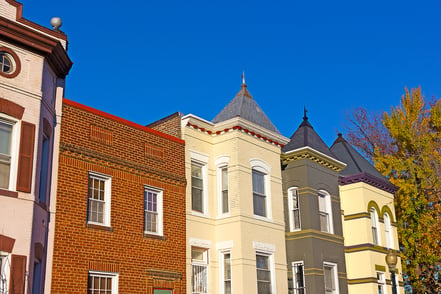Historic brick homes are certainly beautiful and charming - and those that have stood the test of time are also resilient, having demonstrated considerable ability to hold their own against the elements. When you consider the fact that historic brick and mortar are not waterproof, this is impressive. Both building materials are porous, but yet work in a way that allows the water to weep away and evaporate. However, when historic old brick and mortar are improperly maintained, winter’s freeze-thaw conditions can cause temperature-related water damage. Here are three key ways to avoid winter water damage to old brick.
1. Prevention is Better Than Remediation
The most economical way of avoiding winter water damage is to ensure it won’t happen in the first place. Adding extra insulation to your attic and keeping your roof in good repair is important, as is an annual inspection of your brick. Damaged or missing mortar, cracking of mortar or bricks, and chipped bricks should be assessed by an expert in historical brickwork and repaired as soon as possible.
Remember, historic brick buildings often don’t have a structure that holds up the brick—the brick is the structure. So, keeping it in great shape is an integral part of the structural integrity of your historic home.
2. Don’t Allow Ice Dams to Form
Have you noticed the small, twinkling icicles hanging from your roofline or gutters? While they may look pretty, they indicate a potentially ominous problem: ice dams. Ice dams form when warm air from the building encounters the underside of the roof in the attic. This warm spot melts a little snow, turning it to water, running down the roof until it meets the cold eaves and refreezes, this time into ice.
This ice buildup continues, forming a ridge. Once that ridge is formed, future ice has nowhere to go but back up the roof, pressing itself beneath shingles and potentially seeping through the roof sheathing. Once this happens, the water can drip into your attic or run behind walls, causing damage to both the brick and your interior spaces.
As the problem escalates, the weight of the ice dams increases, sometimes reaching hundreds of pounds. If they crash away from the building, they can tear soffit, facia, and gutters with them, severely damaging the brick as they fall. Keeping your gutters clean in the fall and your eaves free of snow with a roof rake can help prevent ice dam formation.
3. Watch for Signs of Damage
Water damage is insidious with historic brick homes and can worsen with the freeze-thaw cycle of winter. What at first may seem like an odd spot on the wall can quickly expand into a serious and expensive problem.
Signs of winter water damage include:
- Crumbling mortar
- Spalling
- Efflorescence
- Brick Loss
- Bowing interior or exterior walls
- Brown spots on ceilings
- Brown lines running down walls
- Damp carpet near walls or wet baseboards
- Peeling or flaking paint
4. Work with a Historic Brick Expert
While many contractors claim to work with historic homes, few use the proper lime-based mortar necessary to repair the original mortar properly. They also lack the networks to source replacement bricks. It’s crucial to hire an expert who understands the importance of using traditional methods and materials to ensure the stability of your historic brick home's repair and long-term structural integrity.
A few routine repairs will prevent winter water damage and ensure the brick stays beautiful for many generations to come.
Renaissance Development, a leader in brick restoration and historic preservation, specializes in the restoration of a historic brick building’s mortar joints using traditional methods (tuckpointing) and materials. Contact us for a free site visit and project quote.
Tags:
Repair, Historic Preservation, Interior brick walls, Exterior brick, Water damage, Ice dams, preventive maintenance, old brickDec 29, 2022 8:45:00 AM


